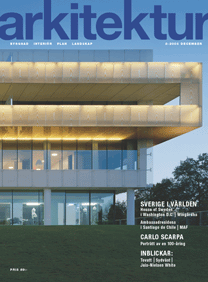Eames in Uppsala – comment to Powers of Ten
Charles and Ray Eames besides designing furniture and houses worked frequently with exhibitions and films. Always – as in the case of Powers of Ten – closely together with scientific experts.
One of the regulars was Owen Gingerich, Harvard professor of astronomy and history of science. He is also wrote The book nobody read: Chasing the revolutions of Nicolaus Copernicus (2004) with interesting facts about his collaborations with Charles Eames and an unexpected Swedish connection.
Like a science historian’s not so bloodstained version of The da Vinci Code, Gingerich describes his chase for the still existing originals of Copernicus’ 1543 book, De revolutionibus, where the idea of earth and the planets circling the sun was first launched.
Charles Eames took part in this chase. As a photographer and researcher in preparation for the big Copernicus exhibition, opened in December 1972 at IBM Exhibit Centre, Madison Avenue, New York, he travelled together with Gingerich. The astronomer especially mentions their trip in the summer of 1972 to Krakow, Poland, and Uppsala, Sweden. Incidentally he notes Eames’ reaction arriving at Arlanda. The designer was very surprised and pleased observing that the then airport furniture was all of his and Ray Eames’ design.
The Copernicus collection at the Carolina Rediviva library in Uppsala, according to Gingerich is stunning. Highlights are the books Copernicus himself owned and worked with, forming his revolutionary ideas. Including a copy of Greek astronomer Ptolemy's Almagest, three other classics recently (in the 16th century) printed in Nürnberg, as well as Copernicus’ own Greek dictionary and his notes in words and tabular form.
Gingerich describes how he and Eames worked with great concentration with their Nikon cameras to catch every detail of the precious books. And how here in Uppsala for the first time he felt that he had met Copernicus (who lived 1473-1543) as a fellow human. ”These volumes were at his desk”, he writes.
Eames Copernicus film was finished the following year, 1973, and shown at the IBM centre in New York. By then the original version of Powers of Ten (1968) had already been out for five years. The 1977 remake, shown on this blog, was finished in Charles Eames’ last year together with another of the “house experts”, MIT physics professor Philip Morrison.



































Inga kommentarer:
Skicka en kommentar